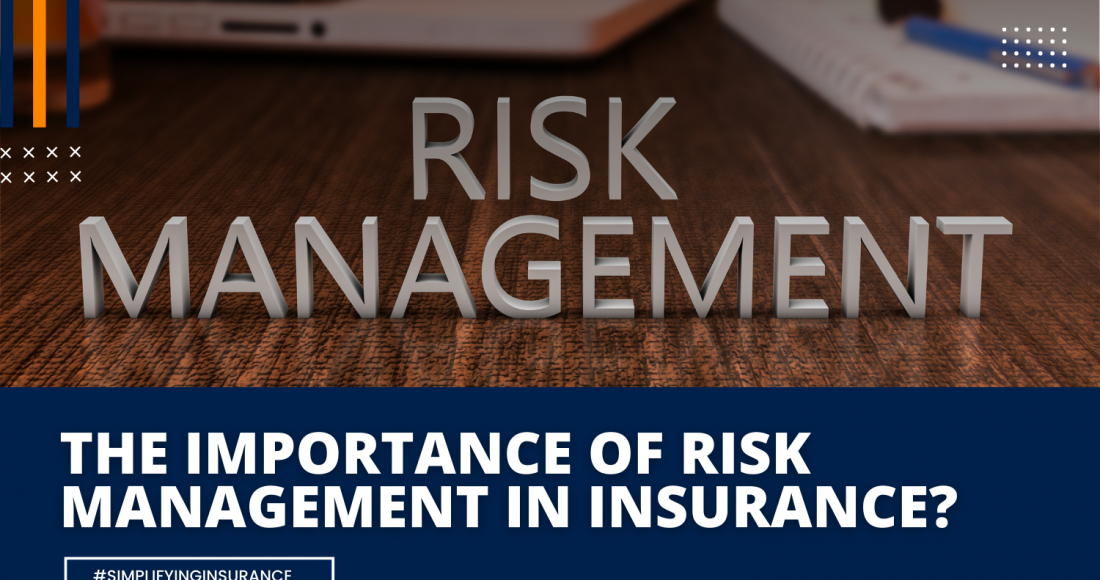Risk management in insurance involves analyzing and quantifying the changes and associated financial impacts of events occurring in a customer’s world and potentially requiring settlement by the insurer and then spreading the risk across multiple insurers in the market. The practice of identifying potential risks, analyzing them, and reducing the risk is called risk management in insurance. Risk management is primarily concerned with identifying potential threats before they occur to mitigate the adverse impact to achieving project objectives. Consider numerous risk factors into account during a project’s lifecycle. Doing so can protect a project from potentially harmful environmental, cultural, financial, or other risks. Risk management ensures a smooth flow of projects to maximize profitability and productivity. There are five steps to the risk management process. Together, these steps deliver a practical and straightforward risk management process. In brief, they are as follows;
Risk Identification
The process involves identifying, uncovering, and describing the risk factors that could impact a project. In this stage, use several techniques to identify potential risks and prepare a project risk register.
Risk Analysis
Following the identification steps, this is the next step. Risk analysis involves identifying how the risks registered might affect the project’s goals and objectives.
Risk Evaluation
It helps to determine the likelihood, magnitude, and consequences that risk may have on a project. In addition, it helps to assess which chances are severe enough to justify treatment.
Risk Treatment
Developing a risk response plan is an essential step in the process. It is the stage at which an organization can assess the highest rated risks and decide what treatment method to use to achieve acceptable levels of risk. Furthermore, it assists in creating strategic mitigation strategies, prevention plans, and contingency plans. Consequently, this minimizes risk exposures and negative consequences.
Monitoring And Review
Use a risk register which you developed in your earlier risk management steps. Risks can be monitored, tracked, and reviewed in this way. Putting a framework around it reduces project risk in most cases because the risk is all about uncertainty. Managing risk helps prevent problems from occurring. By doing so, they can avoid impulsive reactions to problems encountered during a project. As a result, stakeholders and project teams are happier. Insurance involves risks between an individual or entity and the insurer. To maximize their performance, insurance companies must therefore develop a very robust and elaborate risk management policy. It helps insurers develop a solid and effective risk management strategy. An insurance company evaluates a company’s risk management processes in five key areas:
Risk Management Culture
It refers to considering the extent to which risk and risk management in all areas of corporate decision-making. An effective risk management program encompasses the policy aspect. Furthermore, it aids in determining the company’s philosophy regarding risk, its appetite for risk, and the governance and organizational structure of its risk management procedures.
Risk Control
Insurance companies use some form of assessment to determine the importance of the insurer as far as credit, market, insurance, and operational risks are concerned. They can evaluate an entity’s quality risk management, risk monitoring, and limits for retained risks.
Extreme Event Management
The process includes analyzing crisis scenarios and performing stress tests to visualize the possible impact of disasters. It enables you to assess the potential company’s reputation, liquidity, and financial strength.
Risk And Capital Models
Most credit, market, and insurance organizations do not have easy access to information about their level of risk exposure from their accounting systems. In light of this, these organizations are charged with monitoring, controlling, and managing risk exposures, indicative, predictive, and sensitivity risk measures.
Strategic Risk Management
It refers to the risks associated with the changing technological processes. Therefore, a company should create an action plan to consider risks that may disrupt operations due to technological shifts.






